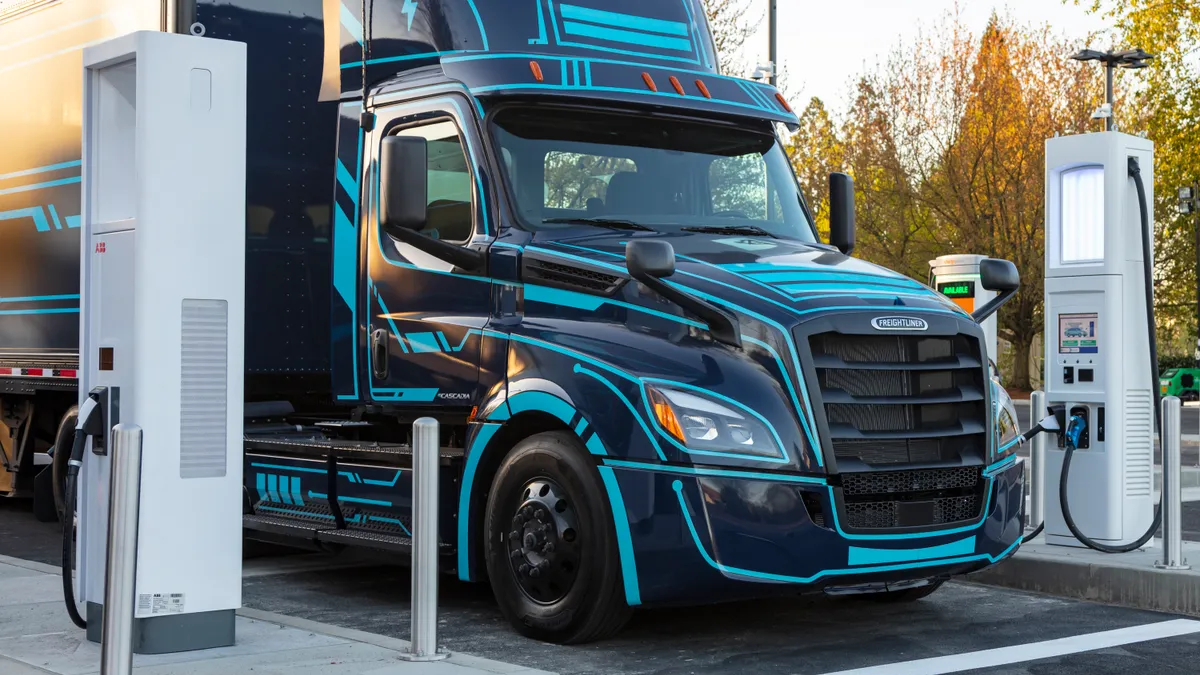Cole Jermyn is an attorney at Environmental Defense Fund.
It took the diesel engine decades to become the standard in America’s trucking industry. The industry’s transition to electric motors is happening a lot faster than that. My organization tracks publicly available electric truck deployments and commitments, and 2023 was a big year. More than 10,000 electric trucks hit the road, and many, many more are on the way, as manufacturers, fleets and state and federal incentives are juicing this essential American market.
Yet we know that powering this new wave of transport isn’t as simple as swapping vehicle models. An electrified trucking industry will require new grid infrastructure across every state and thousands of utility territories. Many of these grid projects require years of planning, analysis, permitting, financing and, finally, execution.
This pace has protected utilities and investors from risk, and customers from paying for unnecessary or too-costly projects. But a quick look at the trends in electric truck deployments in recent years makes it clear that business-as-usual grid modification won't cut it in the long run. Fleets are often able to procure zero-emissions vehicles and chargers in less than a year. Grid upgrades can take upwards of five or more years.
At this critical juncture, we must ensure regulators and utilities are empowered to quickly and cost-efficiently build the infrastructure to meet this coming demand. In the world of utility planning and regulation, that will require new thinking, approaches and authority.
That’s the crux of a new report from Environmental Defense Fund, which identifies key actions regulators and state legislators can take to allow utilities to get ahead of electricity demand growth affordably, responsibly and quickly.
For example: Currently, utilities are often not required to include broad industry trends like truck electrification in their forecasting and planning. Moreover, most utilities couldn’t act on electric truck trends proactively if they wanted to because regulatory processes require them to receive specific requests from customers to expand charging infrastructure before they begin upgrade projects. We need to flip that on its head.
By updating policies so utilities can identify and complete grid upgrades in advance of fleets’ electrification requests, utility regulators and lawmakers can make the grid an accelerator in this transition rather than a limiting factor. This is particularly true in states like California, New York and New Jersey with high concentrations of commercial vehicles and the most ambitious decarbonization goals. The states and utility territories with sufficient grid capacity proactively in-place will be at a competitive advantage for all aspects of the energy transition.
At the same time, we need to be careful and thoughtful, not just quick. We lay out a framework state leaders can use to empower utilities to plan effectively and protect their constituents and communities as this critical infrastructure is built. Leveraging data sources not historically used in load forecasting, including vehicle telematics and satellite imagery, can help utilities pinpoint where charging needs actually are. Greater use of distributed energy resources, such as load management software and solar and battery storage located alongside chargers, can delay and mitigate grid upgrade needs. Frequent communication, both with fleets and the communities where they operate, can ensure grid upgrades are serving chargers where they are needed and wanted, maximizing the air pollution benefits of electrification.
Lastly, how we pay for this work will be crucial. Our latest report builds upon a previous EDF-commissioned report which showed that covering the cost of infrastructure upgrades needed for fleet charging can increase utilities' revenue without raising consumers’ electricity rates. Billions of dollars in grants and tax incentives from the historic infrastructure law and the Inflation Reduction Act are also available to shift some of these costs away from electricity customers. And private capital will have a large role to play, as electrification is increasingly making sense for fleets from a purely economic perspective.
The electric truck transition should be an all-hands-on-deck effort. Making sure the electric grids across the U.S. — and the utilities that build and maintain them — are prepared must be at the center of this. Policymakers can jumpstart this work by enacting changes that allow and encourage utilities to proactively prepare their systems for truck electrification while ensuring protections are in place for ratepayers. In doing so, they’ll be helping to clean the air in our communities and address climate change in the process.














